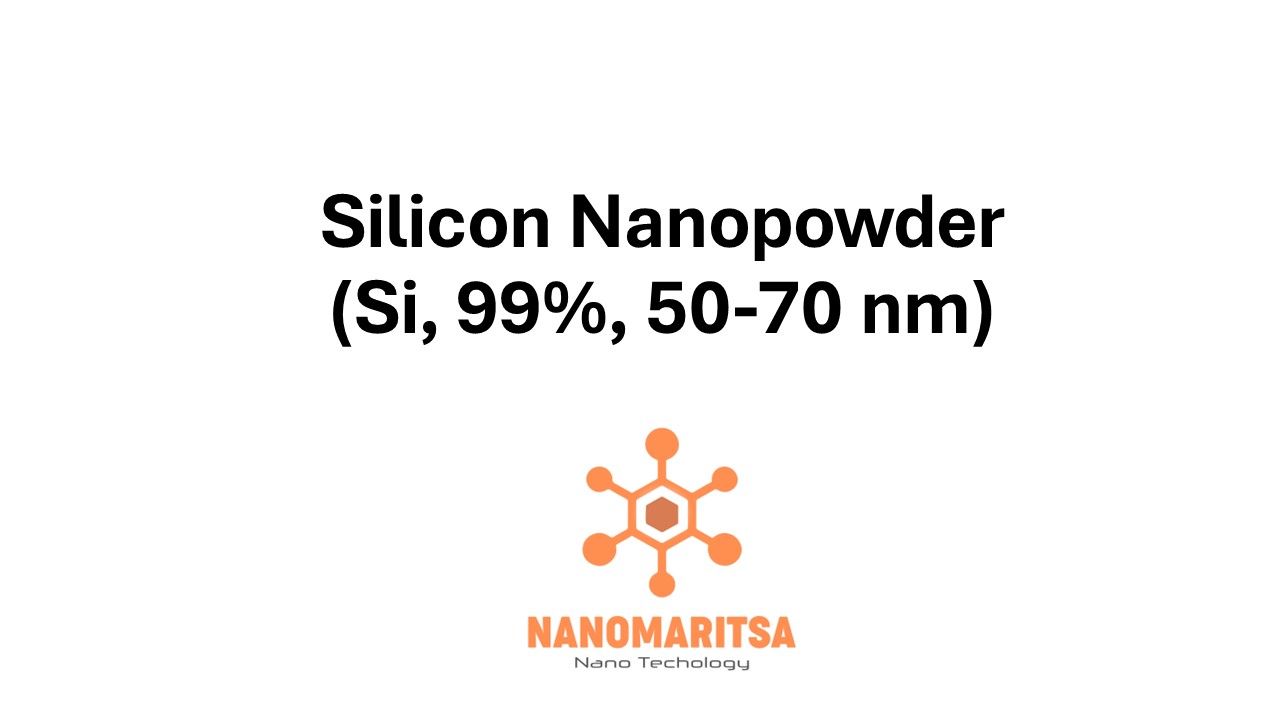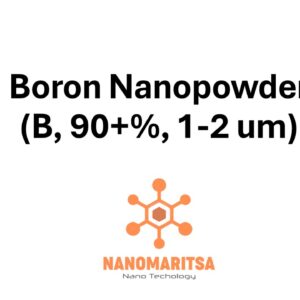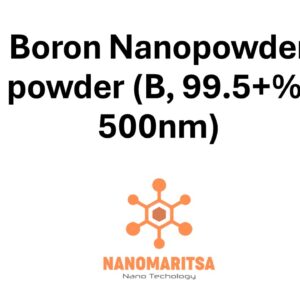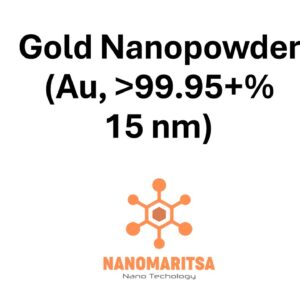Silicon Nanopowder (Si, 99%, 50-70 nm) is a high-purity material made of silicon nanoparticles with a particle size range of 50-70 nanometers (nm) and a purity of 99%. This nanopowder exhibits unique properties compared to bulk silicon, including increased surface area, improved reactivity, and enhanced performance in various applications. Due to its distinctive characteristics, silicon nanopowder is widely used in industries such as energy storage, electronics, photovoltaics, and nanocomposites. Below is a comprehensive overview of its key features, properties, and applications.
Key Features:
Silicon (Si):
Silicon is one of the most important elements in modern technology, used extensively in electronics, solar cells, and construction. At the nanoscale, silicon’s properties change significantly, enabling it to be used in a variety of cutting-edge technologies. Silicon nanopowder, with its small particle size, shows improved surface interaction, making it more reactive and efficient for many industrial and scientific applications.
Purity (99%):
The 99% purity of silicon nanopowder ensures that it is free from unwanted impurities, which is vital for applications requiring high material quality and consistent performance. High purity also contributes to the enhanced efficiency and functionality of the material in electronic and energy-related applications.
Particle Size (50-70 nm):
The particle size of 50-70 nm provides a balance between high surface area and material stability. This size range enhances the material’s reactivity, dispersion, and integration with other substances, ensuring uniformity in various industrial processes, including catalysis, energy storage, and material reinforcement.
Properties:
High Surface Area:
Silicon nanopowder exhibits a high surface-to-volume ratio, which significantly increases its reactivity. This makes it ideal for applications where surface interaction is critical, such as catalysis, energy storage, and the reinforcement of composite materials. The increased surface area allows the material to more effectively participate in chemical and physical processes.
Electrical Conductivity:
As a semiconductor, silicon nanopowder retains its semiconducting properties, enabling its use in a variety of electronic applications. The nanopowder form allows for better conductivity and enhanced performance in devices like transistors, sensors, and integrated circuits. The smaller particle size results in improved electrical efficiency, making it more suitable for high-speed electronics.
Optical Properties:
Silicon nanopowder demonstrates unique optical properties at the nanoscale due to quantum effects. These properties make it ideal for optoelectronic applications such as light-emitting diodes (LEDs), solar cells, and photodetectors, where improved light absorption and energy conversion efficiency are crucial.
Thermal Conductivity:
Silicon has excellent thermal conductivity, a property retained in its nanopowder form. This makes it useful for thermal management applications, such as heat dissipation in high-performance electronic devices, power electronics, and LED systems. The nanopowder’s ability to efficiently dissipate heat is beneficial in preventing overheating in sensitive electronic components.
Mechanical Strength:
Silicon nanopowder retains the inherent mechanical strength of bulk silicon. When incorporated into composite materials, silicon nanopowder helps to improve the overall mechanical properties, such as hardness, durability, and resistance to wear and corrosion. This makes it suitable for use in demanding applications where material strength is essential.
Reactivity and Catalysis:
Due to its high surface area and smaller particle size, silicon nanopowder exhibits increased reactivity compared to bulk silicon. This makes it ideal for use as a catalyst or a catalyst support in various chemical reactions, speeding up processes like hydrogenation, energy production, and environmental remediation.
Applications:
- Energy Storage and Batteries:
Silicon nanopowder is widely used in lithium-ion batteries and next-generation energy storage systems. Silicon anodes, due to their higher theoretical capacity compared to conventional graphite anodes, offer significant improvements in energy density and storage capacity. Silicon nanopowder helps enhance cycling stability and performance over many charge/discharge cycles. - Semiconductors and Electronics:
Silicon is the foundation of the semiconductor industry, and silicon nanopowder is used in the production of electronic components such as transistors, sensors, and integrated circuits. The high surface area and improved conductivity of silicon nanopowder enable more efficient and compact electronic devices, facilitating advancements in computing, communication, and sensing technologies. - Photovoltaics and Solar Cells:
Silicon nanopowder is utilized in the development of thin-film solar cells and photovoltaic devices. Its improved light absorption and energy conversion efficiency make it an excellent candidate for next-generation solar technologies. Silicon nanopowder allows for the production of flexible, efficient, and cost-effective solar panels with enhanced performance. - Nanocomposites:
Silicon nanopowder is used to reinforce nanocomposites, improving their mechanical, electrical, and thermal properties. These composite materials are used in a variety of industries, including aerospace, automotive, and electronics, where high-performance materials are needed to withstand extreme conditions and stresses. - Catalysis and Chemical Reactions:
Silicon nanopowder serves as a catalyst or catalyst support in several chemical processes. Its increased surface area and reactivity make it highly effective in speeding up chemical reactions such as hydrogenation, energy production, and carbon capture. Silicon nanopowder is also used in the production of specialty chemicals and environmental applications. - Hydrogen Storage:
Silicon nanopowder is being researched for its potential use in hydrogen storage systems. The material’s high surface area makes it an excellent candidate for adsorbing and desorbing hydrogen, a key component for efficient fuel cell technology and sustainable energy solutions. - Thermal Management:
Silicon nanopowder’s high thermal conductivity makes it ideal for use in thermal management applications. It can be incorporated into heat sinks, cooling systems, and electronic devices that require efficient heat dissipation to prevent overheating, particularly in power electronics and high-performance computing systems. - Optoelectronics and Photonics:
Silicon nanopowder is used in optoelectronic devices such as LEDs, photodetectors, and lasers. Its unique optical properties at the nanoscale improve the efficiency of light emission, absorption, and detection, making it ideal for use in lighting systems, displays, and optical communication devices. - Biomedical Applications:
Silicon nanopowder is being investigated for use in biomedical applications such as drug delivery systems, medical imaging, and implants. Its biocompatibility and reactivity can be harnessed for controlled drug release, enhanced imaging, and the creation of more efficient medical devices.
Handling and Safety:
Health and Safety Considerations:
Silicon nanopowder should be handled with care to avoid inhalation, ingestion, or skin contact. Fine particles can pose health risks if inhaled, so appropriate personal protective equipment (PPE), including gloves, masks, and safety goggles, should be worn during handling. Work in a well-ventilated area or use extraction systems to minimize exposure to dust.
Storage:
Silicon nanopowder should be stored in a cool, dry, and well-ventilated environment to prevent contamination. It should be kept in tightly sealed containers to avoid exposure to moisture and air, which could affect its properties. The material should be stored away from incompatible substances.
Precautions:
To prevent the generation of airborne dust, handle silicon nanopowder with care. Work in controlled environments, such as fume hoods or dust-free areas, to minimize the risks associated with inhalation. Dispose of waste materials according to local environmental regulations.
Summary:
Silicon Nanopowder (Si, 99%, 50-70 nm) is a high-purity material with enhanced properties, including increased surface area, improved reactivity, and excellent electrical, optical, and thermal characteristics. These properties make it suitable for a wide range of applications, including energy storage, semiconductors, photovoltaics, catalysis, and nanocomposites. Silicon nanopowder significantly improves the performance and efficiency of technologies in electronics, energy, and optoelectronics. Proper handling and safety precautions are essential to ensure its effective use in various industrial and scientific applications.
| Measurement (gr) | 25 grams, 100 grams |
|---|






